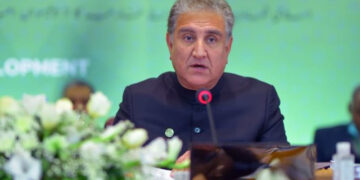With nearly half of Rs145 billion taxes on natural gas lost to court cases, the government has assured the International Monetary Fund (IMF) to make more power tariff adjustments if surcharges imposed recently were struck down by the Supreme Court of Pakistan.
[contentblock id=1 img=adsense.png]

“To protect against a potential negative outcome of legal challenges to electricity surcharges, our strategy would be to take mitigating measures including tariff adjustments, and, if required, suitable amendments to the National Electric Power Regulatory Authority (Nepra) Act that are in line with international best practices and preserve Nepra’s independence,” said Finance Minister Ishaq Dar in a written commitment submitted to the IMF. He went on to add that “in any case, we stand ready to take compensatory measures as needed, including adjustment on revenue side to reach our fiscal target”. The government has explained to the IMF that only Rs75bn out of Rs145bn revenue target from Gas Infrastructure Development Cess (GIDC) had been recovered during fiscal year ending June 30, 2015 because of legal challenges in various courts. Development funds were tightened to offset GIDC shortfall and other revenues slippages. Documents made public by the IMF put the stock of power sector payables at Rs615bn at end-March 2015. These comprise the circular debt of Rs280bn payable towards power sector entities and the stock of Rs335bn arrears covered by the Power Sector Holding Company Limited (PHCL).
[contentblock id=2 img=gcb.png]
The build-up of arrears was due to significant non-recoveries related to government and private consumers, accrued interest on PHCL debt, line losses that are not recognised in the tariff, delays in the refund of excess GST collected by the FBR, late payment surcharges, and delays in tariff determinations. The authorities plan to reduce the accumulation of payables. This includes steps to improve collections and reduce operating costs and losses. The accumulation of payables would be reduced from an estimated Rs175bn in fiscal year 2014-15 to Rs113bn this year, with a view towards further halving new arrears accumulation by 2018-19. To achieve this, capital expenditures and revenue-based load management would reduce losses and improve collections. Overall losses are expected to decline by 0.5 per cent and collections are expected to improve by 2pc per year. Taking advantage of the room created by low oil prices, late payment surcharges and higher system losses were incorporated into fiscal year 2014-15 determined tariffs.
[contentblock id=3 img=adsense.png]
This is expected to arrest a portion of the build-up of the circular debt and improve the cash-flow of the system. The government will continue to work with some regional (provincial) and local governments to prevent further accumulation of arrears. In addition, the stock of arrears is expected to be significantly reduced over the next three years, supported by privatisation and limited budgetary support. The stock of PHCL debt will be transferred back to distribution companies (Discos), which will be privatised. This will help to reduce the stock and ease the servicing of PHCL debt. In the meantime, a surcharge will be levied to service the PHCL debt. The authorities have allocated about 0.1pc of GDP of budgetary resources to clear part of the stock of arrears that accrued with respect to provincial and local governments. The IMF said there were significant downside risks to the plan. In particular, delays in the privatisation programme and court challenges to the surcharges would set back the programme and increase the flow of payables. On the upside, the government can step up its efforts to further reduce transmission and distribution losses and increase collections.










